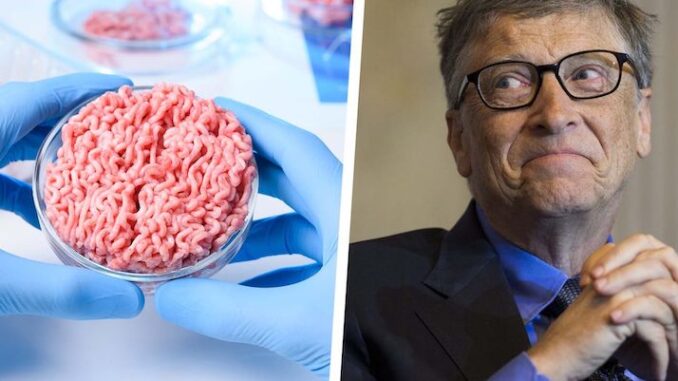
A new study from the University of California, Davis, has found that Bill Gates’ lab-grown meat is not only carcinogenic, but its carbon footprint impact is likely to be “orders of magnitude” higher than retail beef.
The preprint study concludes that the energy needed and greenhouse gasses emitted during all stages of production of lab-grown meat is far greater than traditionally raised beef.

BYPASS THE CENSORS
Sign up to get unfiltered news delivered straight to your inbox.
You can unsubscribe any time. By subscribing you agree to our Terms of Use
Latest Video
Researchers conducted a life-cycle assessment of the energy needed and greenhouse gases emitted in all stages of production and compared that with beef. One of the current challenges with lab-grown meat is the use of highly refined or purified growth media, the ingredients needed to help animal cells multiply. Currently, this method is similar to the biotechnology used to make pharmaceuticals. This sets up a critical question for cultured meat production: Is it a pharmaceutical product or a food product? –UC Davis
Technocracy.news reports: “If companies are having to purify growth media to pharmaceutical levels, it uses more resources, which then increases global warming potential,” according to lead author and doctoral graduate Derrick Risner, of the US Davis Department of Food Science and Technology. “If this product continues to be produced using the “pharma” approach, it’s going to be worse for the environment and more expensive than conventional beef production.”
The scientists considered the ‘global warming potential’ to be the carbon dioxide equivalents emitted for each kilogram of meat produced – and found that the global warming potential of lab-based meat using these purified media is up to 25 times greater than the average for retail beef.
More from UC Davis on the eventual goals of lab-grown (cultured) meat;
One of the goals of the industry is to eventually create lab-grown meat using primarily food-grade ingredients or cultures without the use of expensive and energy-intensive pharmaceutical grade ingredients and processes.
Under that scenario, researchers found cultured meat is much more environmentally competitive, but with a wide range. Cultured meat’s global warming potential could be between 80% lower to 26% above that of conventional beef production, they calculate. While these results are more promising, the leap from “pharma to food” still represents a significant technical challenge for system scale-up.
“Our findings suggest that cultured meat is not inherently better for the environment than conventional beef. It’s not a panacea,” said corresponding author Edward Spang, an associate professor in the Department of Food Science and Technology. “It’s possible we could reduce its environmental impact in the future, but it will require significant technical advancement to simultaneously increase the performance and decrease the cost of the cell culture media.”
Even the most efficient beef production systems reviewed in the study outperform cultured meat across all scenarios (both food and pharma), suggesting that investments to advance more climate-friendly beef production may yield greater reductions in emissions more quickly than investments in cultured meat.
Developing the technology that would allow the leap from “pharma to food” is among the goals of the UC Davis Cultivated Meat Consortium, a cross-disciplinary group of scientists, engineers, entrepreneurs and educators researching cultivated meat. Other goals are to establish and evaluate cell lines that could be used to grow meat and find ways to create more structure in cultured meat.
Risner said even if lab-based meat doesn’t result in a more climate-friendly burger, there is still valuable science to be learned from the endeavor.
“It may not lead to environmentally friendly commodity meat, but it could lead to less expensive pharmaceuticals, for example,” said Risner. “My concern would just be scaling this up too quickly and doing something harmful for the environment.”
Other authors include Yoonbin Kim and Justin Siegel of UC Davis and Cuong Nguyen of the University of California Division of Agriculture and Natural Resources.
The research was funded by the UC Davis Innovation Institute for Food and Health and the National Science Foundation Growing Convergence Research grant.


